Subscribe | Navigate to Topic: SEO BigQuery ML Display
SEO
Python Script: Google Autosuggest Trends for Niche Keywords
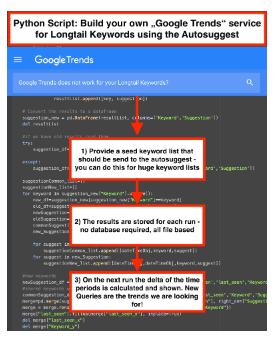
You like Google Trends, but you’re disappointed that it doesn’t work well for Long Tail Keywords? Then keep on reading and use this Python Script to build your own “Google Trends” service by using the Google autosuggest.
Python Script: Compare the Content of 2 Website Sitemaps on n-gram Level
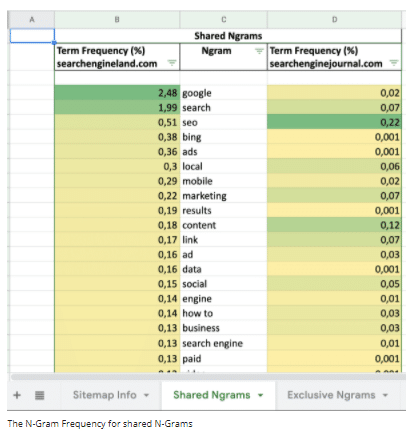
How does your content compare to your strongest competitor? To answer this question, we build a small Python Script that is doing this task.
Python Script: Cluster Keywords into Topics using SERP Results
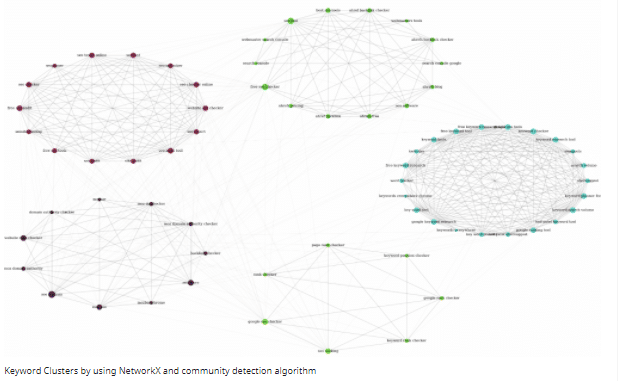
We already released a Python Script here that is using this approach for grouping keywords together by using the search results from Google. We further improved this version and added some nice graph outputs for visualizing the keyword topics in a more understandable way.
Predicting Covid Cases using Google Trends on Symptoms
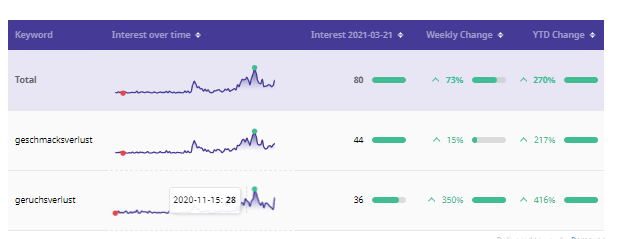
We recently build an automated solution using PyTrends to pull data from Google Trends, calculate some time period comparisons like “Weekly Change” and “YTD Change” and render the full result with some JavaScript.
Electronic Car models: Who will catch the Tesla Model 3 in DE Market?

But which electronic car model can compete with Teslas model 3 in user demand? Let’s have a look at search trends for the German market. The data is pulled from Google Trends. The interest is shown in an indexed way per keyword.
BigQuery ML
BigQuery ML with Scheduled Queries and Partitioned Tables
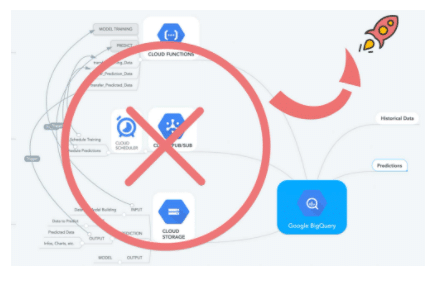
Google’s BigQuery is a perfect fit as a Marketing Analytics Data Warehouse. Google Analytics 360 uses BigQuery. If you’re using free Google Analytics and Google Ads, you can also import their data into BigQuery via Google App Script or Ads Script.
Export to BigQuery asap if you set up Google Analytics 4
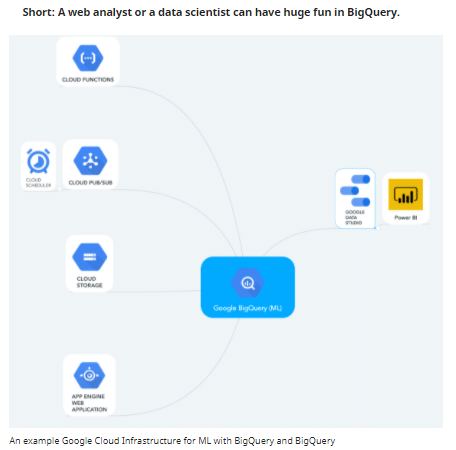
Google’s BigQuery is a perfect fit as Marketing Analytics Data Warehouse (DWH). Even if you’re not the tech affine marketing guy, and you don’t have the power in your team to deal with a DWH, please do your future techie and your business a favor, enable the Export to BigQuery, today.
Display
Clustering Google Display Placements Using Tf-Idf + KMeans

You can group display placements together based on their website content and judge elements even with low sample sizes. This will help you detect the good and bad performing ones and make adjustments.
Use Google Play Store Data to Score Mobile App Placements in Google Ads

Identifying the quality of a placement is more difficult on mobile apps. Insufficient sample size can be quite a challenge. Here is a smart solution to tackle this problem.
